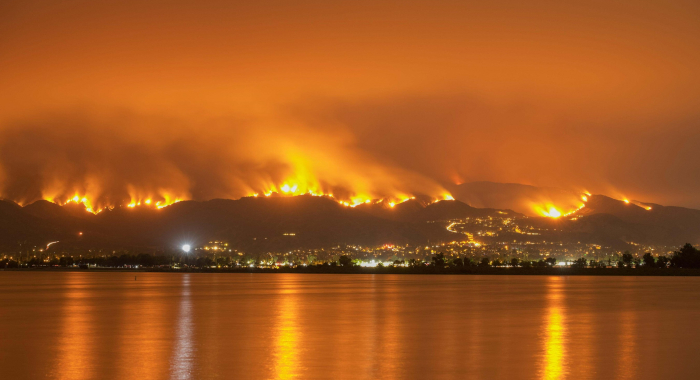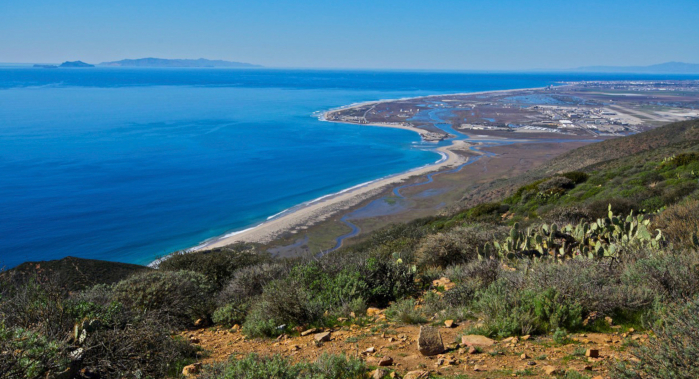Systematic, science-based conservation planning is a hallmark of the Conservancy. For biodiversity to thrive, habitats need to be protected, enhanced, or restored not just in the still wild places on the planet but also where people live and make their livelihoods.
Multi-disciplinary planning can help elucidate where the highest priority places are and what needs to happen there – and inform tradeoffs between conservation and other societal values.


Carrie Schloss, Liz O’Donoghue, Dan Rademacher, Patric Huber, Jodi McGraw, Kim Becerril, Janine Knapp
Every year, infrastructure agencies and developers spend hundreds of millions of dollars to mitigate for impacts to sensitive species and habitats. These mitigation sites are often piecemeal projects,…Carrie A. Schloss, D. Richard Cameron, Brad H. McRae, David M. Theobald, and Aaron Jones
Plant and animal species are already shifting their ranges in response to a changing climate. Maintaining connectivity between present habitat and suitable habitat in the future will become…Aaron M. Eger (University of New South Wales), Cayne Layton (University of Tasmania), Tristin A. McHugh (TNC), Mary Gleason, and Norah Eddy (TNC)
Kelp forests around the world are experiencing significant declines due to a variety of factors, driving the need for more active kelp restoration efforts. The science and practice of kelp forest…Melissa M. Rohde, Tanushree Biswas, Ian W. Housman, Leah S. Campbell, Kirk R. Klausmeyer, Jeanette Howard
Groundwater dependent ecosystems (GDEs) are increasingly threatened worldwide, but the shallow groundwater resources that they are reliant upon are seldom monitored. In this study, the researchers…Melissa M. Rohde, Tanushree Biswas, Ian W. Housman, Leah S. Campbell, Kirk R. Klausmeyer, Jeanette Howard
Groundwater dependent ecosystems (GDEs) are critical habitats throughout California that rely on shallow groundwater. Unfortunately, only a small subset of wells provide monitoring data for shallow…The Nature Conservancy, AECOM
With increase in devasting storms and wildfires due to climate change, we need solutions to help mitigate the impact. Traditionally, “gray” or “hard” infrastructure…Melissa M. Rohde, John C. Stella, Dar A. Roberts, Michael Bliss Singer
This study combines satellite, groundwater, and streamflow data over a 5 year period (2015-2020) to understand the impacts of groundwater depth and streamflow alteration on groundwater-dependent…John C. Stella, Li Kui, Gregory H. Golet, Frank Poulsen
Streamside forests are incredibly important for fish, birds and other wildlife. They are also valuable for storing carbon which is needed to combat climate change. This is especially the case in…Case study by: K.D. Holl, G.H. Golet
Advancing conservation requires understanding the constraints imposed on natural systems by human societies. This understanding typically comes from engagement with local stakeholders, as opposed…Case study by: Khara Strum (Audubon California), Kristin Sesser (Point Blue Conservation Science), Greg Golet (TNC)
This case study communicates lessons learned by TNC and partners from years of research and monitoring of habitat enhancement projects in Sacramento Valley rice agriculture. It is a contribution to…Moses Katkowski, H. Scott Butterfield, John Knapp, Kelly Easterday, Laura Riege, Mark Reynolds
This 5-year action plan describes the vision for invasive plant species mapping, monitoring and treatment at the Jack and Laura Dangermond Preserve in Sourthern California. The plan is adaptive and…Kelsey Jessup, Sophie S. Parker, John M. Randall, Brian S. Cohen, Rowan Roderick-Jones, Shona Ganguly, Jill Sourial
This paper presents results from Planting Stormwater Solutions, part of TNC’s Urban Conservation work in Los Angeles. The authors develop a methodology to prioritize siting of vegetated…P. Manley, K. Wilson, N. Povak
The Framework for Resilience offers a shared vision for resilience that recognizes the interdependent nature of social and ecological values. These values are described by ten pillars that represent…Kristen N. Wilson, Patricia N. Manley
Climate change, high-severity wildfire, and drought threaten the resilience of forests and communities in the Sierra Nevada. The Tahoe–Central Sierra Initiative (TCSI) is a partnership of state…Environmental Science Associates (ESA) for The Nature Conservancy and Naval Base Ventura County
Charlotte Stanley, Alyssa Mann, Walter Heady
The United States operates thousands of military installations in the U.S. and worldwide, worth about $1.2 trillion. These facilities are where personnel train and test weaponry, with…Walter Heady, Alyssa Mann, Stacey Solie, Bob Battalio, James Jackson, Kendall Lousen, and Bob Barnes
The U.S. Congress and the Department of Defense (DoD) have determined that climate change is a threat to national security and have required military installations to develop plans to improve the…Alyssa Mann, Walter Heady, Charlotte Stanley
TNC and the United States Navy partnered together to prepare for the impacts of climate change on Naval Base Ventura County (NBVC), Point Mugu in California. NBVC is a critical and strategic asset of…Alyssa Mann, Walter Heady, Charlotte Stanley